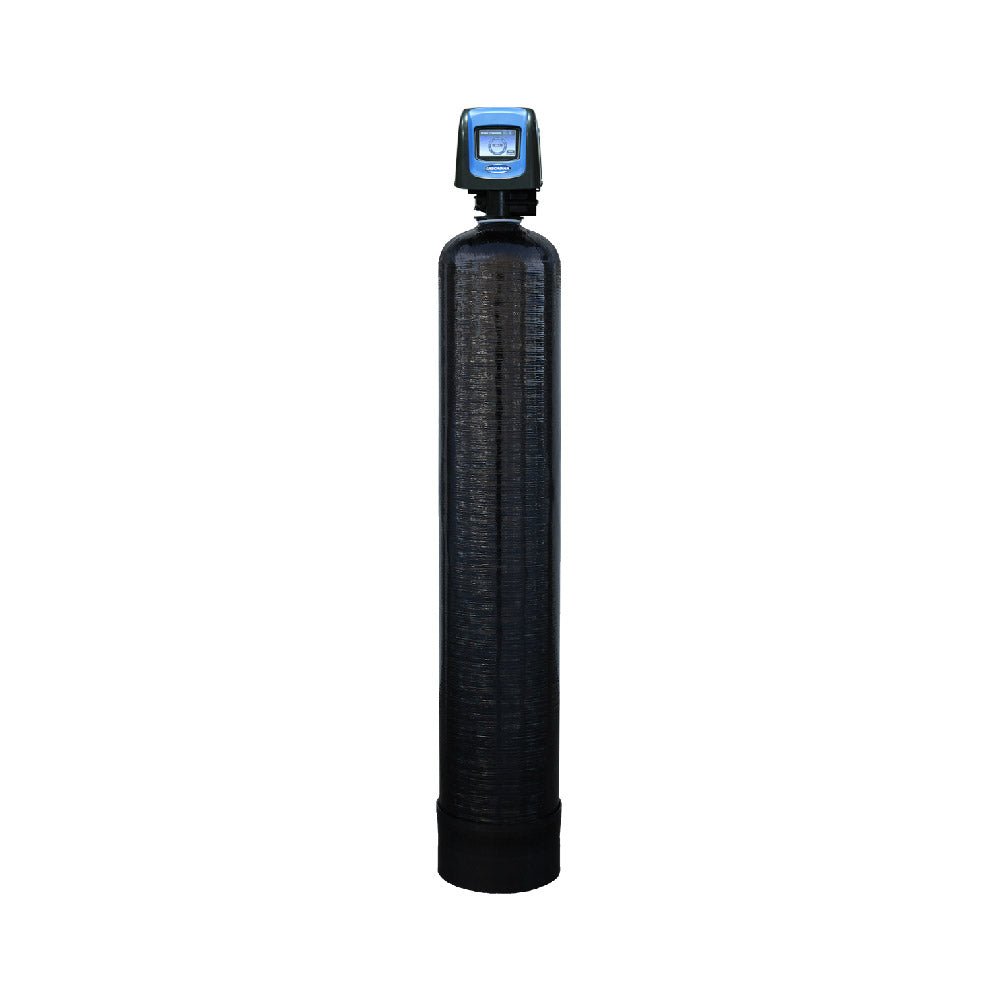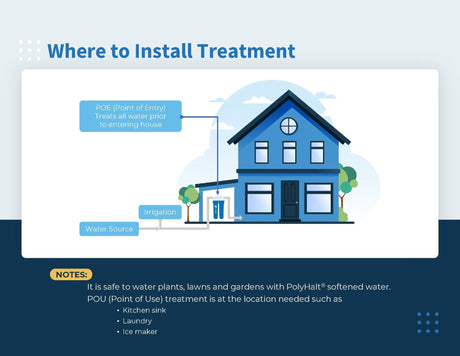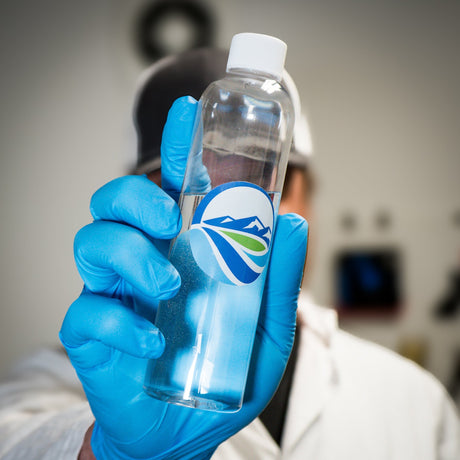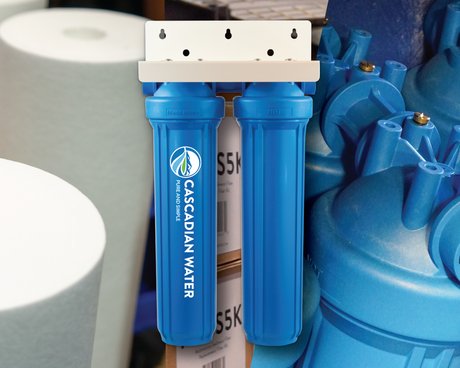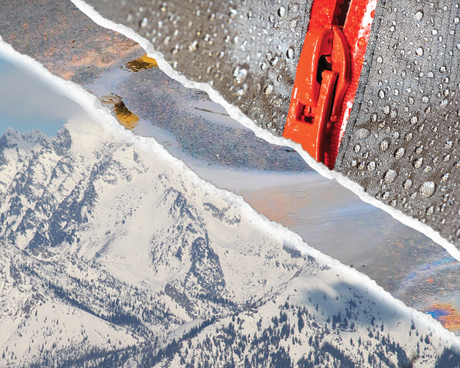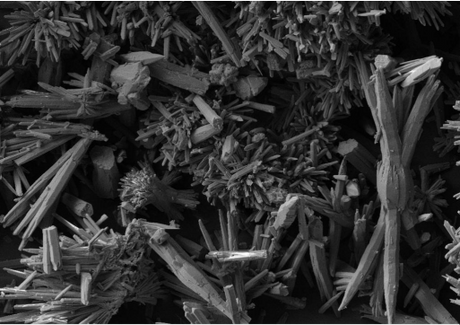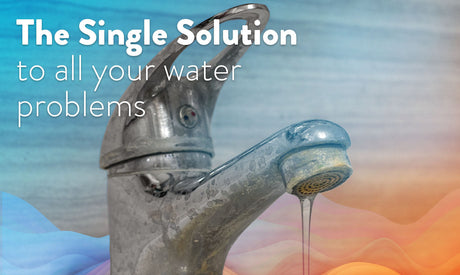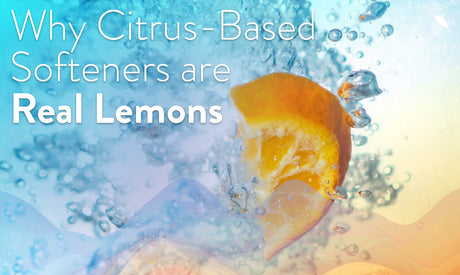Simply stated – Automatic backwashing filters are those that are able to reverse flow of water through the media to clean, regenerate, re-stratify or refresh themselves.
Backwashing filters are often the unsung hero in the water treatment world, they do the "heavy lifting" in water treatment. Specific designs solve a broad range of quality problems. Problems solved with backwashing filters include:
- sediment / particles
- iron and manganese
- taste and odor
- hydrogen sulfide (rotten egg)
- low pH adjustment
- and removal of specific contaminants such as arsenic, fluoride, chlorine
Backwashing filters have a long service life, are very dependable, and have many of the same components as salt softeners. They have media (often called the filter bed), a media tank, and a filter control valve. Since they don't use ion exchange they don't have a brine or salt tank.
The filter control valve sits on top of the media tank and automatically directs flow of water through the media and tank. Most filter control valves have 3 cycles;
- service - water is being filtered
- backwash - the first of two cleaning cycles and
- rapid rinse
How does a Backwashing Filter Work?
During the service cycle water is treated by one or more processes. Processes include; separation, adsorption, and addition of sacrificial media to the water each having its specific place and purpose in treatment. Many backwashing filters are specialized, designed to treat one water quality problem. A "filtration system" may have more than one filter, think multiple filters for multiple problems.
Contaminants are filtered from the water as it flows through the media bed from the top to the bottom of the filter tank. If the filter did not have a mechanism for cleaning itself it would, over time, foul, plug up or otherwise stop working and fail. To prevent this from happening the control valve periodically directs the flow of water to clean the filter bed after which the filter is returned to service. This filter cleaning process is known as "backwashing" or "regenerating".
During the backwash cycle water flows in reverse from the service flow, water flows from the bottom of the filter bed to the top lifting the media and separating the filtered contaminants which flow out of the control valve to drain. Following the backwash cycle is the rapid rinse cycle. During the rapid rinse cycle water again flows from the top to the bottom of the media bed. This is the same direction as the service flow, but the water is directed to the drain. The rapid rinse cycle serves two primary purposes; it re-packs the media bed and cleans leftover contaminants from the bottom of the bed. Once the rapid rinse cycle finishes the control valve places the filter back into the service mode.
Backwashing Filter Requirements:
- This Placement on a solid level surface
- Power
- Adequate flow and volume of water for through backwash
- An adequate drain
- Protection from freezing and direct sunlight
Most backwash filters pass untreated water during the backwash and rapid rinse cycles. Because of this, water used while the filter is backwashing or rinsing is untreated. This is typically called "hard water bypass" and has to do with fire code. Imagine what would happen if there was a fire but no water to put it out because the backwash filter was busy cleaning itself?
Full Time Filter Operation:
Because some jobs require treated water 24/7 thought has to be given in the design to provide treated water during the backwash cycle. There are ways to make sure that happens. The most common are:
- For continuous flow more than one backwashing filter can work together. These designs allow for "on-line" filters to handle the required flow rate while another is "off-line" during its backwash cycle.
- Use a treated water storage tank. Use a storage tank with enough capacity to provide the needed water for backwash and for fighting a fire. Because you use a storage tank to provide water a filter can backwash without interrupting flow.
- Using large modern cartridge filters. Properly maintained cartridge filters do not pass untreated water because they do not have a backwash cycle. they are also easily manifolded so that they can be services without losing flow.
Are you looking for a better solution to your water problems? We’re here to help!
Get started with our simple Filter Finder Quiz. And in 3 minutes or less, it’ll tell you exactly which water treatment system is perfect for you — and for our environment!

